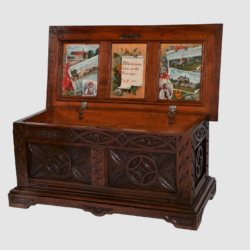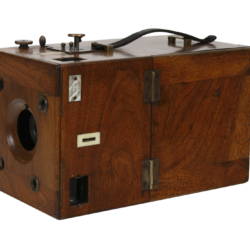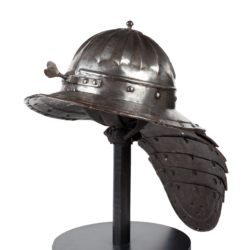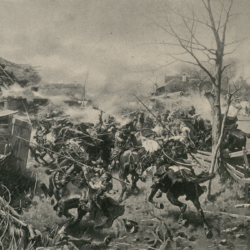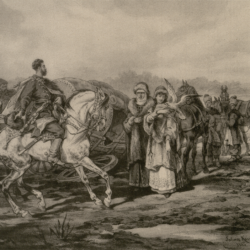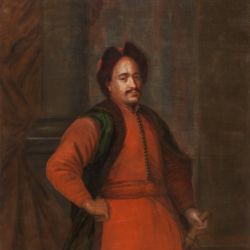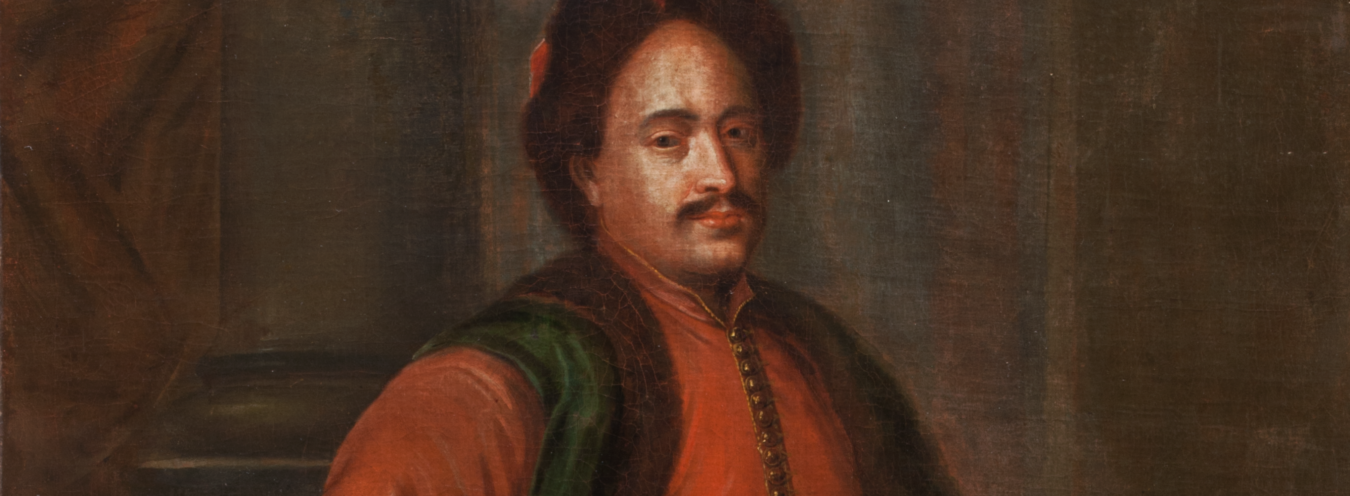
The chosen
It should be emphasized that the focus on the main film characters illustrates the specifically Polish approach towards political community. Ewa M. Thompson discussed the cultural foundations of Sarmatism (Sienkiewicz is one of the propagators of its modern incarnation), arguing that the basic tenet underlying the Sarmatist philosophy is the importance of an individual. The individual identifies themselves with a political and national community, but still retains the superior role, and stays in the center of attention[1]. This manner of thinking concurs with the popular narration, also – or rather in particular – with Sienkiewicz’s narration, which always employs individual charters in order to comment upon more general social issues.
The adaptations made in the period of the Polish People’s Republic present male heroes who are always active in the face of danger. This must have been as pleasing for the spectators, as it was for the reviewers and critics. This positive reception is visible in the comments on the model masculinity of Kmicic and Staś Tarkowski. Aleksander Ledóchowski observed a psychological compensation for the contemporary “nihilistic” art – The Deluge for him was a film, which finally “shows the Polish man as a man of action and a man of the future”[2]. The virtue of an instigator turning into a conscious patriot was often emphasized, and due to this fact the film was believed to contain an “outright and clear moral message”[3].
Within the movies, the individual in question was supposed to not only be unique, but also act as a conciliator for the masses. Decisions concerning the cast in the “great” adaptations of Sienkiewicz’s works awakened powerful emotions. The Deluge may serve as a prominent example, as the cast was discussed in the press for months[4]. A similar discussion was incited by the announcement of a casting for the lead roles of In Desert and Wilderness[5].
In the context of the adaptations of Sienkiewicz’s works, both the scale of the castings was much grander than usual, and the accompanying emotions were more powerful. “300 candidates for the roles of Staś and Nel. Still no elephant and no dog” – newspapers announced on New Year’s Eve of 1969 [trans. K.F]. Finally, according to various statistics, 7 to 10 thousand young people took part in the casting. This, in turn, caused concern among moralists worried about teenagers drawn away from school in order to submit to the pressures of the pursuit of success.
The search for lead actors in The Deluge began with a return to the cast of Colonel Wolodyjowski. Not all the decisions could be repeated, and it had to be decided who would star as the main protagonists – Kmicic and Oleńka. The idea that Daniel Olbrychski should star as Andrzej Kmicic incited a discussion in the media, which continued even after the crew started shooting, and returned once again after the premiere. Paradoxically, the objection against this decision resulted from Olbrychski’s success. In Colonel Wolodyjowski, Olbrychski played Azja in such a suggestive manner, that he became strongly associated with this particular character in the minds of the viewers. An outstanding critic, Aleksandr Jackiewicz, was afraid that “the respectable Andrzej Kmicic may be too Tartar-like”[6], and, similarly, one of the readers of “Przyjaciółka” magazine begged for “the dream hero of Polish girls” not to be played by “this terrifying Azja with his monstrous face”[7]. The doubts expressed in the debate prove the bewildering power of mistaking a character with an actor. The success of an actor often relies on the fact that it is difficult to imagine them as a different persona, but becomes problematic, when it is hard to imagine the actor in a different role. Therefore, if Olbrychski – with his “eyes blazing with passion” [trans. K.F] – became Azja, he could not impersonate anyone else. And a Tartar cannot be a Polish knight. Other arguments were surfacing, too – the actor was supposed to be too short, or too uneducated for the role of Kmicic. All of these arguments were collected in a jocular commentary written by Janusz Głowacki, who stated: Olbrychski “starred as Azja, and we all remember that he is short, dark, bearded and stoop-shouldered; even on tiptoes he is shorter than the shortest knight. Olbrychski has no higher education: such an ignoramus can play Hamlet, the Prince of Denmark, but not our Polish Andrzej Kmicic”[8].
The film director fiercely defended his choice of Olbrychski, while desperately looking for the lead’s partner, both among professional female actors, and in castings. The crew were shooting, and Oleńka was still not chosen. The titles of press notes concerning the search for the actor were permeated by anxiety: “Are there no beautiful women?” [trans. K.F]. Beauty was, in fact, an alibi for the associate producer, Wilhelm Hollender, who explained the lack of the female lead in such way: “Oleńka Billewiczówna represents the sheer beauty of Polish women”[9]. No doubt that it was so difficult to find the perfect candidate.
The protagonists of Sienkiewicz’s narratives were supposed to be an embodiment of the Polish spirit – and the cinematic adaptations forced these protagonists to become materially embodied by the actors, who, in turn, became the bearers of Polishness. Therefore, the choice of cast made a profound impact on the contents of the Polish imaginarium – no wonder these proceedings incited such lively debates.
Przypisy
- Cf. “Polski nacjonalizm jest niezwykle łagodny.” Z Ewą Thompson rozmawia Filip Memches [“Polish Nationalism Is Curiously Benign”. Eva Thompson Talks to Filip Memches”, “Europa. Tygodnik Idei” [Europe. A Weekly Full of Ideas] 2007, issue 156, p. 11.
- A. Ledóchowski, “Potop” Jerzego Hoffmana [Jerzy Hoffman’s Deluge], “Kino” [Cinema] 1974, issue 2; trans. K.F.
- J. Zatorski, Z ducha Sienkiewicza [Sienkiewicz by Nature], “Kierunki” [Directions] 1974, issue 36; trans. K.F.
- See I. Kurz, Potop szwedzki 1971–1974. Remake [The Deluge 1971-1974. Remake], in Potop Redivivus [Deluge Redivivus], edited by G.M. Grabowska, K. Koła-Bielawska and A. Wyżyński, Olszanica–Warsaw 2015, pp. 241–255. I am using here some short fragments of this paper.
- The ideas concerning the organization of huge castings were not new. Ongoing democratization, together with the fascination with popular culture, contributed in 1957 to the organization of a contest for the lead actress in Tadeusz Chmielewski’s Eve Wants to Sleep (Barbara Kwiatkowska was the winner). After the casting’s success, on July 20, 1958, the “Film” magazine, together with Zespół Autorów Filmowych [The Team of Film Creators], announced a contest entitled “Beautiful Girls on Screens”.
- A. Jackiewicz, Wartości constans (“Zapiski krytyczne”) [Stable Values (“Critical Notes”], “Film” [Film] 1971, issue 25; trans. K.F.
- W sprawie Kmicica (“Z naszej poczty”) [On Kmicic (“Our Mail”)], “Przyjaciółka” [Friend], 13.06.1971; trans. K.F.
- J. Głowacki, “Kultura” [Culture] 13.06.1971. A reprint entitled Od tyłu [In Reverse] in J. Głowacki, Jak być kochanym? [How to Be Loved?], Warsaw 2005, pp. 22-24; trans. K.F.
- Qtd. in “Głos Robotniczy” [The Workers’ Voice], 15.07.1971; trans. K.F.

